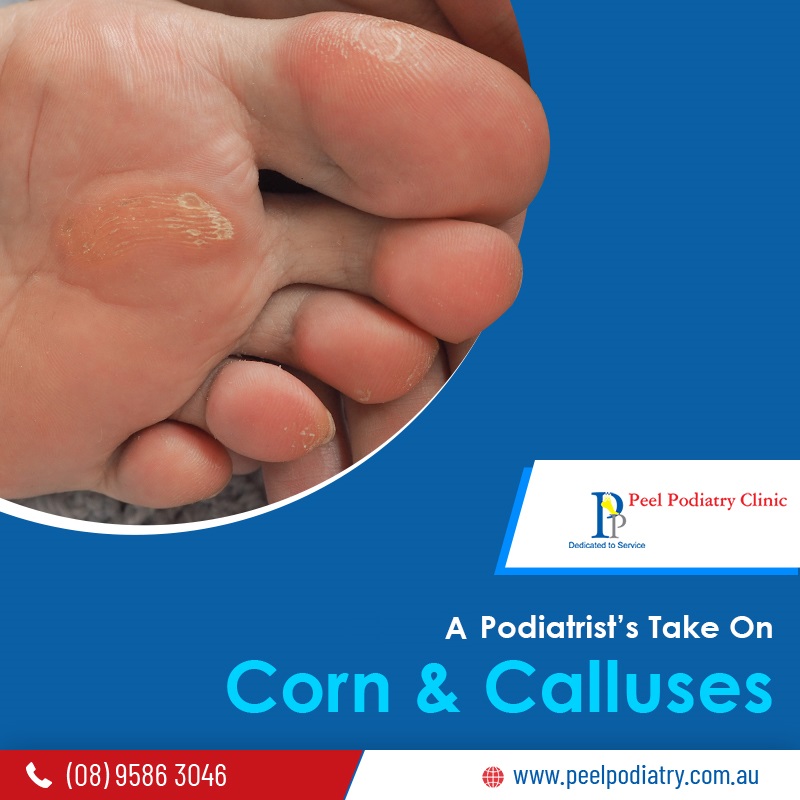Two of the most common foot problems are corns and calluses, usually a result of friction or pressure. While many people confuse between the two, ignore the condition, and even treat them the same way, the conditions only get worse with time. It is, thus, crucial to know the difference between the two and why early treatment is crucial.

1. What are corns and calluses?
Corns & calluses are thickened, yellowish plaques of skin often found in places where there is friction or pressure over a long period of time. Also, if there is an underlying injured area that the skin is trying to shield but is exposed to rubbing or pressure, corns and calluses tend to form. People who wear ill-fitting shoes (wrong size, smaller or larger than the required size) for a long time, are engaged in a profession where they have to stand for a prolonged time or have sweaty feet, are more at the risk of having corn and calluses.
2. What are the major differences between the two?
Callus
- When a particular portion of the skin becomes thick and hard due to pressure, friction or irritation, it is known as a callus. Usually found on the feet but callus can also develop on knees, hands and elbows.
- Colour & texture – Calluses display pale or yellowish colour. Upon touching them, it feels rough and lumpy. Since it is a hard and thick mass of skin, it is less responsive to touch.
- The main difference between calluses and corns is that the former are comparatively bigger and wider with less developed edges.
- Places where it develops – Underside of the feet or toes.
Corn
- Corns are smaller than calluses and often have a central core of keratin. Generally, corns form on smooth and hairless skin surfaces and can be of two types – hard and soft corns.
- Colour and texture – Hard corns form on the areas of hard skin surfaces, especially in the bony regions of the foot. Whereas soft corns have a more rubbery texture and are whitish coloured. Soft corns developed on sweaty and moist regions of the feet and between the toes.
3. Their signs and symptoms
- a rough and thick area of skin
- a toughened, raised lump
- dry, flaky or waxy skin
- pain or softness beneath the skin
4. Prevention and cure
- Scrub your feet with soap, water and brush every evening
- After washing and drying your feet, apply a moisturizing foot cream that has been prescribed by a podiatrist.
- Buy shoes during the latter part of the day. As per podiatrists’ recommendation, feet swell slightly after sunset and it is easier to determine the right size of your shoes.
- Immediately visit a podiatrist should you experience any foot pain or skin irritation.
- Use a pumice stone regularly to exfoliate dead and hard skin.
- Wear clean socks everyday.
- Apply talcum powder before wearing socks and shoes if you have sweaty feet.
Conclusion: Corns and calluses are the outcomes of excessive pressure or friction on the skin of your feet. Ill-fitting shoes and walking barefoot are to be avoided at all costs if you don’t want to befriend corns and calluses. Not to forget, maintaining a healthy foot hygiene is absolutely essential. However, if you suffer from diabetes and sensitive skin conditions and the corns or calluses are very painful, consulting a podiatrist is mandatory. After examining the condition, the podiatrist may remove the corn/callus or follow other types of procedures to alleviate the existing condition. To know more about our podiatry services, call us on (08) 9586 3046.
Also Read: Bad Habits That Can Harm Your Foot Health
